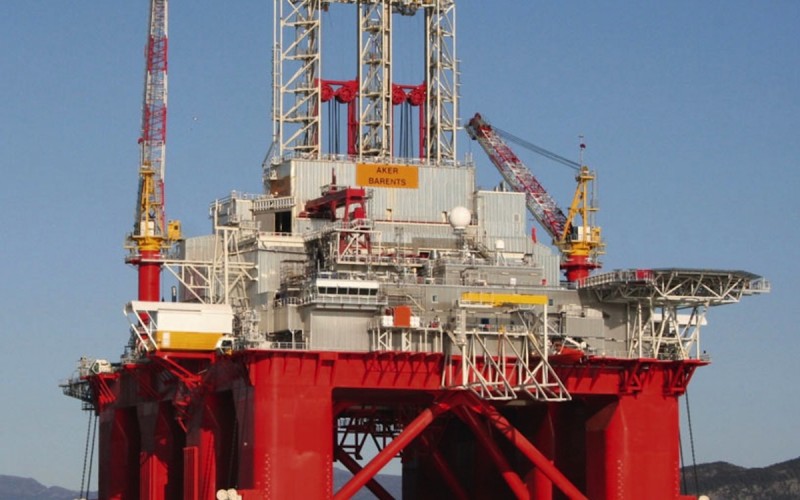The drastic fall in oil prices has made petroleum explorations in the Barents Sea seemingly unprofitable. Yet, despite severe economic, technological and environmental concerns, the Norwegian government pushes for increased activities, and recently handed out exploration licenses in the Barents Sea.

The huge fall in global oil prices since June from $115 to around $50 has dramatically lowered cost-margins in the volatile petroleum industry. After 5 years of stable high prices, the recent fall in oil prices is attributed to several reasons: sluggish economic output, the shale gas revolution in the US, a switch to alternative fuels, and finally the unwillingness of OPEC and the Saudis to sacrifice their market share by cutting productions.
The main effect of these developments is felt on the most vulnerable sectors of the oil industry, including the costly, technologically complicated and risky extraction from Arctic areas.
Despite serious concerns over unsustainable profit-margins, the Norwegian government recently awarded 61 new licenses to explore the Barents Sea, 34 of those in the previously undeveloped southeast area, signalling the government’s strong political commitment to further develop their northern territories.
Arctic extraction a high-cost procedure
Global Risk Insights has previously covered the massive petroleum reserves to be found under the Arctic seabed. However, large-scale extraction has yet to take place because of the daunting challenges that face prospective companies. In addition to a lack of infrastructure, harsh climate and long transport and supply lines, the operations are technologically challenging in themselves.
All these factors taken together results in the lowest profit margins in the oil industry, and explains why so few operations have ever moved from the planning phase.
Goliat, operated by ENI, is the only field in the Norwegian sector of the Barents Sea where oil production is likely to happen anytime soon, with expected operations to begin in mid-2015. The long-postponed operation has an estimated break-even of $95 dollars a barrel, making current production economically unprofitable.
Political will, industry skeptical
Investor: “it’s there; it’s huge, but it’s not economical profitable”
Both industry and government officials acknowledge the serious economic, environmental and technological concerns affiliated with Arctic exploration, yet there is a strong political will to push oil operations further north. To compensate for the rapidly decreasing outputs from more saturated fields in the North Sea and the Norwegian Sea, the petroleum sector needs continued explorations in new areas.
Yet the industry itself has been less enthusiastic about new operations in the Norwegian sector in general, and particularly in the expensive Arctic fields. Government officials expressed their disappointment about only receiving one request for developing new fields in all of 2014.
The industry amplified their skepticism at the recent Arctic Frontiers conference in Tromsø, Norway. Investor Jens Ultveit-Moe claimed that current drill operations in the Arctic will be a “financial disaster”, adding that “we have seen it with the Shtokman field; it’s there; it’s huge, but it’s not economical profitable. The Castberg field has a breaking price of $80 per barrel. With production to start in the late 2020s, breaking price will be $120 per barrel, that is three times today’s level.”
Long-term focus
Regardless, there are some major players in the oil industry, who remain optimistic about Arctic oil.
Tim Dodson, the executive vice-president for Statoil, recently claimed that the decision to continue oil production in the Arctic is based on long-term prospects. Despite falling oil prices, Dodson believes huge discoveries and more favourable prices in the future will make Arctic oil exploration profitable, and Statoil has the resources to remain in the game for several decades.
But other long-term developments may jeopardize the Arctic oil industry. Though tensions over Ukraine have not fully transferred to the Arctic arena, there have already been some minor disturbances to Russia-Norway relations in the High North. If unrest in Ukraine escalates, it risks having an impact on Norwegian petroleum ambitions, especially with a growing Russian military presence in the north.
Furthermore, because hydrocarbons break down much slower in cold water, any oil spill would have drastic consequences for the fragile habitat. Environmental opposition to Arctic drilling has become more outspoken globally as well as in Norway, and a recent study argues that all of Arctic fossil fuels should be left buried to prevent catastrophic climate change.
If voters continue to turn against Arctic oil, or the world adopts a stronger climate change agenda in Paris in December, Norwegian policy makers may adjust their strategy away from oil investments.
Falling oil prices may yet prove to have the most far-reaching political and economic ramifications for 2015, and many observers expect Arctic oil to be one of the casualties.
But Norwegian politicians and oil industry representatives are focusing on the years to come, expecting benefits to reveal themselves in 2030 or later. Current predictions are all over the place: president of Goldman Sachs, Gary Cohn, expects the price to fall to as low as $30 per barrel in the long term.
We find OPEC on the other end of the scale, claiming that prices may rise to as much as $200 dollar per barrel when decreased investments in exploration, set off by the falling prices, leads to significantly lower production output in the long term.
Only time will tell which prediction is most accurate – and whether oil investments in the Arctic are able to beat the current predictions.
sourche: http://globalriskinsights.com/2015/02/norway-still-optimistic-arctic-oil/
Δεν υπάρχουν σχόλια:
Δημοσίευση σχολίου